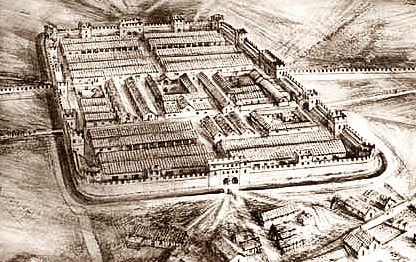
Battles of Viminacium(Battle of Kostolac) |
year: 599 |
| Byzantine victory in three successive battles with heavy losses for the Avars | ★ ★ ★ ★ ★ |
|
enemy: Avars
|
location: Near the town of Kostolac on the Danube river, in Serbia
|
accuracy:
●●●●●
|
|
battle type: Pitched Battle |
war: Wars against Avars & Slavs |
modern country:
Serbia |
| ▼ The Byzantines(emperor: Maurice (Mauricius)) | ▼ The Enemies | |
| Commander: | General Priscus | Khagan Bayan I |
| Forces: | Unknown | Unknown |
| Losses: | 28,000 |
| Background story: |
| The Avars arrived in Europe in the late 550s. Although their tribe would not last, they had a serious impact on the events in medieval Balkans. They were a nomadic Turkic group that had lost a war against other nomads further east, and settled in the Pannonia, subjugating the many small Slavic tribes. They had crushed the Gepid Kingdom and pushed the Lombards into Italy. The leader of the Avars at this time (562–602) was Khagan Bayan I. From 580 when they occupied Sirmion, the activity of the Avars in the Balkans gave a great blow to the prestige of Byzantium. In 588, Emperor Maurice appointed magister militum for Thrace Priscus. In the following years, with short breaks, Priscus conducted constant military operations against the Avars in the Danube region without spectacular success, but he had managed to make it quite difficult for them, while at times the Byzantines sought to appease the Avars and buy the peace paying an annual tribute. In 597, the Avars launched a major invasion surprising Priscus who was besieged in the city of Tomis (Romania's Constantza). The siege was broken on Easter 598 when Byzantine reinforcements led by Comentiolus arrived. Shortly afterwards, however, the Avars attacked again and disbanded Comentiolus' expeditionary force and then invaded Thrace, threateningly approaching Constantinople. But then a plague struck and decimated them. So they stopped the invasion and hurried back to their homeland, after first achieving a new peace treaty with Byzantium under which they would be paid 120,000 solidi per year, twice the amount previously agreed. The Byzantines took advantage of this short break to regroup and organize their counterattack. |
The Battle: |
 Viminacium When the Avar khagan Bayan learned that the Byzantines had campaigned against him breaking the peace treaty, he crossed the Danube at Viminacium and invaded Upper Moisia, leaving behind a force led by his four sons, ordering them to prevent by all means the crossing pf Danube by the Byzantines. However, despite the presence of the Avars, the Byzantine army crossed the Danube with rafts and encamped on the opposite bank, while the two commanders remained in Viminacium, an old Roman fortress on a Danube island that had developed into an important city. At Viminacium, Comentiolus fell seriously ill and was unable to continue, leaving Priscus the sole commander of the Byzantines. According to the historian Theofylaktos Simokattis, the Avars attacked the Byzantine camp, but after a fierce battle were repulsed with heavy losses. They had 4,000 dead while the Byzantines only 300. Within 10 days, two more battles took place in Viminacium where Priscus achieved new victories. In the first, 9,000 Avars and Slavs fell on the battlefield, while in the second 15,000. Among the dead were the four sons of the khagan. Thus the Byzantine army managed to achieve three great victories in Viminacium, bringing to the Avars a total loss of 28,000 men. But Priscus did not rest. He invaded Pannonia, in the heart of the Avar state, and achieved another series of victories near the river Tisza (present-day Hungary). |
Aftermath: |
| It was the first success of the Byzantines against the Avars. It was also a blow to the prestige of the Avars who until then had a reputation of being invincible. |
|
|
